- Balance the Chaos
- Contact
- Hobbies/Passions
- Birding
-
Birding Calhoun County
- Calhoun County Checklist
-
Birds of Calhoun County
>
- Calhoun County Birds by Code >
- Loons (Gaviidae) >
- Grebes (Podicipedidae) >
- Pelicans (Pelecanidae)
- Cormorants (Phalacrocoracidae)
- New World Vultures (Cathartidae)
- Bitterns, Herons, and Allies (Ardeidae)
- Ducks, Geese, and Swans (Anatidae) >
- Ospreys (Pandionidae)
- Hawks, Kites, Eagles, and Allies (Accipitridae) >
- Grouse, Pheasants, Quail, and Turkeys >
- Flamingos
- Cranes, Rails, Gallinules and Coots >
-
Shorebirds, Gulls and Relatives
>
- Black-necked Stilt
- Black-bellied Plover
- American Golden-Plover
- Semipalmated Plover
- Killdeer
- Spotted Sandpiper
- Solitary Sandpiper
- Greater Yellowlegs
- Lesser Yellowlegs
- Upland Sandpiper
- Semipalmated Sandpiper
- Least Sandpiper
- White-rumped Sandpiper
- Baird's Sandpiper
- Pectoral Sandpiper
- Dunlin
- Stilt Sandpiper
- Buff-breasted Sandpiper
- Short-billed Dowitcher
- Long-billed Dowitcher
- Wilson's Snipe
- American Woodcock
- Wilson's Phalarope
- Black-legged Kittiwake
- Bonaparte's Gull
- Laughing Gull
- Franklin's Gull
- Ring-billed Gull
- Herring Gull
- Iceland Gull
- Lesser Black-backed Gull
- Glaucous Gull
- Great Black-backed Gull
- Caspian Tern
- Black Tern
- Common Tern
- Forster's Tern
- Dovekie
- Pigeons and Doves >
- Cuckoos, Roadrunners and Anis >
- Owls >
- Goatsuckers, Nighthawks and Allies >
- Swifts and Hummingbirds >
- Kingfishers
- Woodpeckers and Allies >
-
Perching Birds
>
- Tyrant Flycatchers >
- Shrikes >
- Vireos >
- Jays, Magpies, Crows and Ravens >
- Larks
- Swallows >
- Titmice and Chickadees >
- Nuthatches >
- Creepers
- Wrens >
- Gnatcatchers and Gnatwrens
- Kinglets >
- Thrushes >
- Mockingbirds and Thrashers >
- Starlings
- Wagtails and Pipits
- Waxwings >
- Longspurs and Snow Buntings >
-
Wood-Warblers
>
- Ovenbird
- Worm-eating Warbler
- Louisiana Waterthrush
- Northern Waterthrush
- Golden-winged Warbler
- Blue-winged Warbler
- Black-and-white Warbler
- Prothonotary Warbler
- Tennessee Warbler
- Orange-crowned Warbler
- Nashville Warbler
- Connecticut Warbler
- Mourning Warbler
- Common Yellowthroat
- Hooded Warbler
- American Redstart
- Kirtland's Warbler
- Cape May Warbler
- Cerulean Warbler
- Northern Parula
- Magnolia Warbler
- Bay-breasted Warbler
- Blackburnian Warbler
- Yellow Warbler
- Chestnut-sided Warbler
- Blackpoll Warbler
- Black-throated Blue Warbler
- Palm Warbler
- Pine Warbler
- Yellow-rumped Warbler
- Prairie Warbler
- Black-throated Green Warbler
- Canada Warbler
- Wilson's Warbler
- Yellow-breasted Chat
- Tanagers >
-
Emberizids
>
- Eastern Towhee
- American Tree Sparrow
- Chipping Sparrow
- Clay-colored Sparrow
- Field Sparrow
- Vesper Sparrow
- Lark Sparrow
- Lark Bunting
- Savannah Sparrow
- Grasshopper Sparrow
- Henslow's Sparrow
- Fox Sparrow
- Song Sparrow
- Lincoln's Sparrow
- Swamp Sparrow
- White-throated Sparrow
- Harris's Sparrow
- White-crowned Sparrow
- Dark-eyed Junco
- Cardinals, Piranga Tanagers and Allies >
- Blackbirds >
- Fringilline and Cardueline Finches >
- Old World Sparrows
- Hotspots >
- ID
- Macro, Bugs and Moths
- YouTube Links
|
Early June I went back and looked at some of my pictures from April 16th (since I was trying to get the blog updated). I started looking closer at the Pectoral Sandpipers. With the quantity of birds there, I knew I should have looked closer. As I was looking through them I ran across the bird on the edges of the frame. The very short bill on this bird really was not good for Pectoral Sandpiper. With it flashing its wings part way I assumed it must have just landed, so I decided to track back the pictures to see if I could find more. I went through previous frames and this bird in flight had to be the bird from above. All other birds were accounted for. This was not the flight silhouette of a Pectoral Sandpiper. They are more boxy, wider in the body. Unfortunately this pics were off the main focus point of the picture, so not very clear. These are definitely not a Pectoral Sandpiper though. I start going through the options. Similar sized birds would be
It was a long shot, but really not sure what else it could be. I had picked up 5 more County bird after this one was sighted, so belatedly Buff-breasted Sandpiper was confirmed for Calhoun County bird #222, pushing the total to 227. Never imagined I could get to a number like this. Hopefully I can still find 3 more birds this year to get to 230 prior to the end of it. On top of that this was the first Buff-breasted Sandpiper for the County ever. This pushed Calhoun County up to 272 birds sighted here.
0 Comments
I started up with some Marsh studies along Pine Creek/Nottawa Creek on June 3rd. I've not had much luck with marsh birds while birding in Calhoun. American Bittern, Least Bittern, or even a hopeful King Rail would be hopeful to nice to nab around here. I was to have no such luck with my 3 stops over around a 2 hour time period. Someday I'll chance upon at least 2 of the 3 of those birds. The Pine Creek Wetlands continue to be a host for nesting Barn Swallows under the bridge there.
June 4th I decided to try for Dickcissel at Q DR S and 1.5 Mile Road. It was probably a little early for them. Had my hopes there when I saw a small Heron mixed into the dead corn stalks, in a little fluddle. Turned out to just be a Green Heron. A Spotted Sandpiper was nearby. Beyond that there was little of note at this spot. The highlight would be I finally had a less than comfortable interaction with a "local". A little interrogation from a nearby resident. Very odd. Usually someone stops and asks if "everything (is) okay", or "you all right?". Not "What are you doing?. Late on June 8th came a report of a White-eyed Vireo at Whitehouse by Kiehl Smith. I headed that way on June 9th, stopping at Sunset Hill Drive to again try for Dickcissel. Hugely disappointing as they grass had all been cut down there. The White-eyed Vireo did not reappear at Whitehouse. The highlight was a breeding pair of Yellow-bellied Sapsucker right at the beginning of the trails. According to the range maps their breeding range would normally be around the middle of the state and North. So just a little farther South than normal. The Michigan Breeding Bird Atlas shows how rare they are to be birding this far South in the state.
Daniel Toronto and I decided to try for Eastern Whip-poor-wills at Hart's Lake that same night. With all the construction there it was apparently not meant to be. I imagine the huge tract of woods taken down, and the running of large machinery during the day is not conducive to night birds being able to rest. One very faint Great Horned Owl, an agitated Killdeer and a couple of Sandhill Cranes was all there was. We were back there again on the 11th after a sighting at Fort Custer SRA. Again it was not meant to be. The highlight being a Chimney Swift as a new bird for this hotspot. An out of Calhoun highlight was a Dickcissel calling when I pulled in to work on the 14th.
June 17th I decided to spend the morning running around the area, with targets of Dickcissel and Sedge Wren. Dr. Dale Kennedy had found Dickcissel on 23.5 Mile Road down near Home. I hit up Fairview Cemetery/ Homer Sewage Ponds first thing in the morning, as it was nearby. A not quite fully molted into adult plumage Bald Eagle was on the lower ponds. Other than that nothing too impressive. Hopefully the water level keeps dropping over the next 6 weeks for some shorebirds to show up. The Dickcissel was easy enough to find after that. Right off the road one was on a wire singing loudly. Next up trying to locate a Sedge Wren. Around this time last year I had them on L DR N, so I headed straight to that spot. Just as easy as the Dickcissel a Sedge Wren was singing loudly right near the road. It popped up occasionally, but was still hiding behind other tall grass. I had to try to shoot in a manual focus mode. Not too bad of shots for what I was dealing with.
I tried for more at 24 Mile Road. It was a great spot there, and then driving down O DR N. 28 Birds within a mile, wasn't too bad for middle of June. Yellow-throated Vireo and Warbling Vireo, along with Willow Flycatcher. Next up was one of my favorite spots, 23 Mile Road and O DR N. Turns out there is quite the irruption of Dickcissels this year. I had 3 at the 23 Mile Road site in the morning. This time there was a minimum of 8 birds just within the "normal" area I bird there. Great looks with the top down on the Jeep. Bobolinks and Eastern Meadowlark were also there. I'm going to try to work on more videos when it makes sense. This Dickcissel singing in the tree was that perfect opportunity. Just wish I had some smaller option than the top of the Jeep to rest the camera on.
To top this off after my time there, I drove further down O DR N and had another 8 Dickcissels singing as I drove down there. 19 Dickcissels in one day, not bad at all. Later that day I managed to get back out to D DR S Wetlands. I wanted to check to see if this location would get low enough water level to be shorebird habitat in late July or early August. It showed some promise. The water level was definitely down, but the grass there is fairly high. It has some potential if it drops some more. We shall see. Shorebirds would be another type of bird that could help to push me up over 230 birds. Next up an arm-chair shorebird that gets me one step closer.
At the end of May I did some traveling around the U.P., with just a little bit of birding on the side. Whitefish Point, will definitely be a place to visit in the future. It was relatively quiet while I was there. A late Rough-legged Hawk and a Sharp-shinned Hawk were individual highlights. Large groups of Blue Jays were quite the sight, with well over 120 while I was there. The two-tracks off-road showed off large numbers of Ovenbirds. Porcupine Mountains gave me eye-level Common Raven, and a migrating juvenile Broad-winged Hawk. Brockway Mountain gave me a view of Merlin, from above! The highlight however was near Good Hart. On May 30th, while walking the shoreline, I saw a small group of swallows flying parallel to the shore. I decided to snap some pics, and focused on a swallow that looked very much like a Cliff Swallow. I have very few good photos of Cliff Swallows, so I was hoping to add to that pitiful number. Here is my write up on this bird on eBird describing it: Initially passed off as a Cliff Swallow due to the pale rump. I noticed when I looked at the preview on my camera I couldn’t see the white on the forehead. I dismissed that as just a matter of the angle or size of screen, but still found it curious. I finally managed to look on a large screen and the forehead is clearly “chestnut” like the throat. Too much blue coloring on the head for Cave or Southwestern Cliff, and then I see the tail has a definite fork to it. Cave and Cliff would never show that. Longer pointed wings like Barn Slightly chunkier body like Cliff Small forked tail that is too small for Barn, too long and forked for Cliff Dark forehead that is like Barn Slight white collar like Cliff Pale rump like Cliff Larger blue crown and face than Cliff, but not as much as Barn Primaries and secondaries underwing that look to be darker like Barn Cleaner undertail coverts more like Barn Has some orange wash along he flanks that would be more like Barn Matches up pretty close to accepted Barn x Cliff when searching on eBird media. This would be the first report of this mix to be in Michigan. There are less than 15 report on eBird for this hybrid species. Some of those are close enough they could be the same bird. A little over a week prior one was reported East of Detroit. I wouldn't think this would be the same bird though. This is by far the rarest bird I have ever found, or likely every will find. It doesn't count on the official "list", but it is a bird I will never forget finding. First Michigan Barn x Cliff Swallow (hybrid)I did get some decent shots of other birds while in the area, but none of them as great as the above bird. Next up the June birds.
Sunday May 14th I tried to head back to Woodland to see if migration had started in earnest. FOY Scarlet Tanager and Black-throated Green Warbler showed up, along with Lincoln's Sparrow and a very shy Veery. The Black-throated is a bird I would have expected to see much earlier, and in far greater numbers. The Lincoln's Sparrow gave excellent looks back in the flooded area across the footbridge.
While back there I kept trying to get looks at some small groups of warblers. It certainly wasn't any kind of fallout, but at least it was some birds. I did manage some decent shots of a warbler flitting around the bushes. I called it a female Black-throated Blue Warbler while out there, and moved on. Later that night after looking at this bird closer I struggled over it. I thought the white patch on the front of the wing was a Black-throated marker, and this heavy grey hood on the head, along with strong facial markings really threw me off. I was all over my Warbler Guide, Sibley's and the interwebz. Finally as I look at my pictures for the dozenth time I finally notice the orange-tinted feathers on the head....Orange-crowned Warbler. The previous looks I have had at these birds they have never showed that much gray up top. Not sure it is enough to try to say it is a different subspecies than we should see around here, but definitely not what I am used to seeing.
May 15th I managed to find another Orchard Oriole at the Airport. A juvenile male this time. May 17th the morning brought me the FOY Eastern Wood-Pewee in the yard.
May 20th was the last KBS FOC Field Trip to Kellogg Forest. 50 birds showed up, with the highlight some good looks at a male and female Hooded Warbler. A probable pair of nesting Great Crested Flycatcher, were seen. 12 Warblers were finally cause for some hope that migration was in process. Chestnut-sided Warblers gave some excellent looks, as well as one of the participants finding a nest being built by one. I swung by Woodland Park afterwards and found my Calhoun FOY Chestnut-sided Warbler.
The next day I headed right back to Woodland Park to see if things were continuing to happen. It paid off with 7 more FOY birds. I was greeted by a very vocal Gray-cheeked Thrush at the entrance. A skittish Northern Waterthrush was just off the initial path near where the small bluebird path branches off. I got good looks at it with binoculars, but it disappeared before I could snap a pic. The back woods brought me a Red-eyed Vireo, Alder Flycatcher and my best ever looks at a Yellow-bellied Flycatcher. Getting back to the Jeep there was a Philadelphia Vireo calling from the large tree at the entrance. As I'm getting ready to leave a loud call starts to come from the woods near the South-east corner of the lawn. Very similar to a Carolina Wren, but a bit more musical on the notes. I recorded it and jumped to my Warbler Guide app. I had a hunch on Mourning Warbler, and sure enough it matched up. I later looked at it in Audition and the spectrogram matched up nearly exactly. FOY Mourning Warbler. That made a 12 Warbler day for me. Very nice. Finally migration showed up.
The Airport added FOY Yellow-billed Cuckoo and Willow Flycatcher. The Cuckoo I initially thought was just some noises from Fort Custer. Possibly some yelling over speakers. It wasn't until I had moved farther down the road, and the starting to hear the cooing from behind me it dawned on me it was a Cuckoo. Very softly, but a Yellow-billed nonetheless. I also witnessed two Warbling Vireos attacking a Blue Jay, likely trying to defend a nest.
For Calhoun County May would end up with 166 birds seen this year. Not a Big Year number, but respectable and definitely some good birds and good looks.
|
AuthorMy exploits in my latest passion, Birding...not Bird-watching;-) Archives
November 2023
Categories
All
|
- Balance the Chaos
- Contact
- Hobbies/Passions
- Birding
-
Birding Calhoun County
- Calhoun County Checklist
-
Birds of Calhoun County
>
- Calhoun County Birds by Code >
- Loons (Gaviidae) >
- Grebes (Podicipedidae) >
- Pelicans (Pelecanidae)
- Cormorants (Phalacrocoracidae)
- New World Vultures (Cathartidae)
- Bitterns, Herons, and Allies (Ardeidae)
- Ducks, Geese, and Swans (Anatidae) >
- Ospreys (Pandionidae)
- Hawks, Kites, Eagles, and Allies (Accipitridae) >
- Grouse, Pheasants, Quail, and Turkeys >
- Flamingos
- Cranes, Rails, Gallinules and Coots >
-
Shorebirds, Gulls and Relatives
>
- Black-necked Stilt
- Black-bellied Plover
- American Golden-Plover
- Semipalmated Plover
- Killdeer
- Spotted Sandpiper
- Solitary Sandpiper
- Greater Yellowlegs
- Lesser Yellowlegs
- Upland Sandpiper
- Semipalmated Sandpiper
- Least Sandpiper
- White-rumped Sandpiper
- Baird's Sandpiper
- Pectoral Sandpiper
- Dunlin
- Stilt Sandpiper
- Buff-breasted Sandpiper
- Short-billed Dowitcher
- Long-billed Dowitcher
- Wilson's Snipe
- American Woodcock
- Wilson's Phalarope
- Black-legged Kittiwake
- Bonaparte's Gull
- Laughing Gull
- Franklin's Gull
- Ring-billed Gull
- Herring Gull
- Iceland Gull
- Lesser Black-backed Gull
- Glaucous Gull
- Great Black-backed Gull
- Caspian Tern
- Black Tern
- Common Tern
- Forster's Tern
- Dovekie
- Pigeons and Doves >
- Cuckoos, Roadrunners and Anis >
- Owls >
- Goatsuckers, Nighthawks and Allies >
- Swifts and Hummingbirds >
- Kingfishers
- Woodpeckers and Allies >
-
Perching Birds
>
- Tyrant Flycatchers >
- Shrikes >
- Vireos >
- Jays, Magpies, Crows and Ravens >
- Larks
- Swallows >
- Titmice and Chickadees >
- Nuthatches >
- Creepers
- Wrens >
- Gnatcatchers and Gnatwrens
- Kinglets >
- Thrushes >
- Mockingbirds and Thrashers >
- Starlings
- Wagtails and Pipits
- Waxwings >
- Longspurs and Snow Buntings >
-
Wood-Warblers
>
- Ovenbird
- Worm-eating Warbler
- Louisiana Waterthrush
- Northern Waterthrush
- Golden-winged Warbler
- Blue-winged Warbler
- Black-and-white Warbler
- Prothonotary Warbler
- Tennessee Warbler
- Orange-crowned Warbler
- Nashville Warbler
- Connecticut Warbler
- Mourning Warbler
- Common Yellowthroat
- Hooded Warbler
- American Redstart
- Kirtland's Warbler
- Cape May Warbler
- Cerulean Warbler
- Northern Parula
- Magnolia Warbler
- Bay-breasted Warbler
- Blackburnian Warbler
- Yellow Warbler
- Chestnut-sided Warbler
- Blackpoll Warbler
- Black-throated Blue Warbler
- Palm Warbler
- Pine Warbler
- Yellow-rumped Warbler
- Prairie Warbler
- Black-throated Green Warbler
- Canada Warbler
- Wilson's Warbler
- Yellow-breasted Chat
- Tanagers >
-
Emberizids
>
- Eastern Towhee
- American Tree Sparrow
- Chipping Sparrow
- Clay-colored Sparrow
- Field Sparrow
- Vesper Sparrow
- Lark Sparrow
- Lark Bunting
- Savannah Sparrow
- Grasshopper Sparrow
- Henslow's Sparrow
- Fox Sparrow
- Song Sparrow
- Lincoln's Sparrow
- Swamp Sparrow
- White-throated Sparrow
- Harris's Sparrow
- White-crowned Sparrow
- Dark-eyed Junco
- Cardinals, Piranga Tanagers and Allies >
- Blackbirds >
- Fringilline and Cardueline Finches >
- Old World Sparrows
- Hotspots >
- ID
- Macro, Bugs and Moths
- YouTube Links






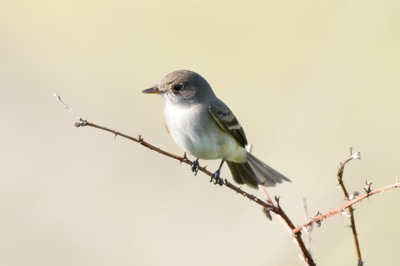
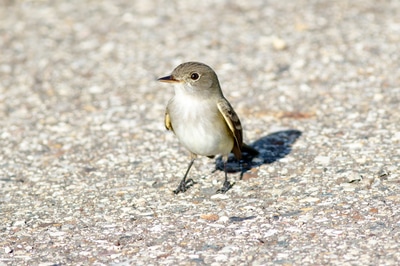




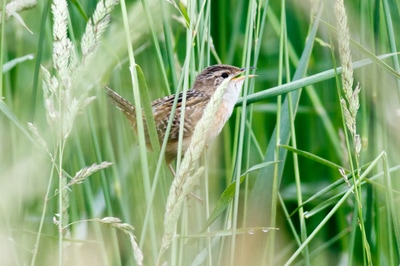














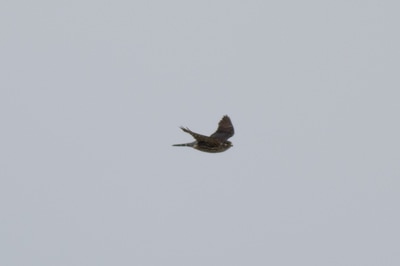
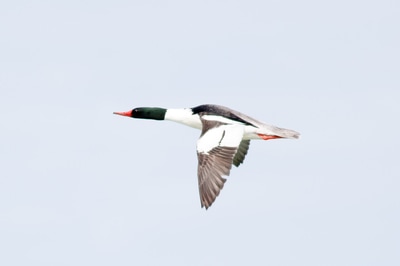












 RSS Feed
RSS Feed
